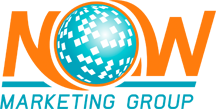The days of the internet wild west are slowly coming to a close, as more and more regulations have come about.
But one area that’s still not quite out of its old-west days is online accessibility. As of yet, there has been no real guidance on what it should look like and who is mandated to provide accessibility. Yet, there were at least 154 digital accessibility lawsuits alleging violations of the Americans with Disabilities Act (ADA) that were filed in federal court in June 2018 alone. Out of those 154 lawsuits, 110 of them were class action lawsuits.
That’s a big uh-oh for many business owners, who are wondering if their website is accessible or if it even needs to be. And, currently, the answers can be pretty confusing. But we’re here to round up some info and help you know if your website is ADA compliant.
What are ADA regulations?
Way back in 1990, the Americans with Disabilities Act become law. Its job is to protect individuals from discrimination and makes sure that all areas of public life are accessible, meaning jobs, schools, transportation, and all public and private places that are open to the general public. Its goal is to give the same opportunities to people with disabilities as everyone else. It basically expands the civil rights protections that are given to people on the basis of race, color, sex, national origin, age, and religion, and makes sure that people with disabilities are given equal opportunity in the public. There are five different titles that each relate to a different area of public life. When you think of the ADA you can think of accommodations that have been made available in public spaces, like ramps, handicapped parking spaces, electric doors, braille signs, etc.

All businesses, if they have a space that is open to the general public, are required to follow ADA regulations. Title III is the section that talks about public spaces. In it, employers are directed to make "reasonable modifications" to their buildings and systems when they serve people with disabilities.
As the internet exploded in the 1990’s, a whole new world of public space was invented. In the 30 years since then, businesses have embraced the world wide web as a way to reach customers and provide them with information and services online. The problem is, accessibility for individuals with disabilities hasn’t kept up like traditional public spaces.
People with disabilities are having a hard time navigating the internet and the courts are currently debating whether ADA regulations can be enforced online. The Department of Justice (DOJ) has hinted that Title III may be applicable to websites, but there still aren’t any formal guidelines legally. Courts are split on if the ADA applies to websites.
We imagine it won’t take too many more years before the ADA is revised to include the internet as a public space and releases its own set of regulations. Until then, we can follow the World Wide Web Consortium’s Web Content Accessibility Guidelines.
Do I need to be ADA compliant on my website?
While the courts still haven’t all agreed that the ADA counts towards the internet, they are likely to make some sort of ruling and provide guidelines in the next couple years. And, with the amount of litigation that has started hitting business who aren’t accessible online, it’s a wise thing to jump on the bandwagon now.
So, if you are a business that exists to benefit the public, a local or state government agency, or are a private employer with 15 or more employees, you should aim to be compliant with ADA regulations and make sure your website is accessible as possible. A good rule of thumb to follow is that if your physical location requires ADA compliance, chances are your web presence does as well.
What does ADA compliant mean for websites?
Until the ADA is revised, many businesses and websites are trying to be proactive in making their online presence ADA compliant and usable by all people, regardless of ability. After all, about 19 percent of the American population are individuals with disabilities. To leave out such a large demographic isn’t great for business, nor is it very nice since there are a couple simple things you can do to change to allow all people to use your website.
According to the Web Accessibility Initiative, the main things to make sure your website is accessible include:
- Perceivable–can people see and hear your content?
- Understandable–is text readable and are elements operating in predictable ways?
- Operable–can people use keyboard functions to peruse and navigate the site?
- Robust–is content robust enough to be interpreted reliably by user agents, including adaptive technology?
The following is jargon-heavy but contains more in-depth information on what each of these bullets mean. Depending on how familiar you are with web design, it might make sense–or it could read like a foreign language. If it doesn’t make a lick of sense, you may want to talk to a web developer who knows what this all means to help you determine what steps you need to make on your website. Or, watch a less technical video about it here.
Perceivable
In order for your website to be considered perceivable, you will need to provide text alternatives for any non-text content, allowing it to be changed into the form people need. This could include large print, braille, speech, symbols, or simpler language. Make sure you deploy alt tags and descriptions for videos, animation, and photography.
You should also provide alternatives for time-based media, including the option to pause media which plays automatically (such as sliders). Captions should also be provided for all pre-recorded audio content, except when the media is an alternative for text and is clearly labeled as such.
An audio description needs to be provided for all pre-recorded video content. And, you should create content that can be presented in different ways (for example a simpler layout) without losing information or structure.
Information, structure, and relationships conveyed through presentation need to be programmatically determined or need to be available in text. If you use any content that’s presented through a sequence that would affect meaning, you should provide the correct reading sequence.
You also should provide instructions for understanding and operating content. Never rely solely on sensory characteristics of components such as shape, size, visual location, orientation, or sound. By separating the foreground from the background you can make it easier for users to see and hear content.
Additionally, color shouldn’t be used as the only visual means of conveying information, indicating an action, prompting a response, or distinguishing a visual element. Stay away from red! It can be very hard for people with color blindness to see red.
If any audio on a web page plays automatically for more than three seconds, you need to add either a mechanism that’s available to pause or stop the audio or make sure there is a mechanism to control audio volume independently from the overall system volume level.
Also, the visual presentation of text and images of text should have a contrast ratio of at least 4.5:1, except for the following:
- Large Text: Large-scale text and images of large-scale text have a contrast ratio of at least 3:1
- Incidental: Text or images of text that are part of an inactive user interface component, that are pure decoration, that are not visible to anyone, or that are part of a picture that contains significant other visual content, have no contrast requirement
- Logotypes: Text that is part of a logo or brand name has no minimum contrast requirement
Except for captions and images of text, the text needs to be able to resize without assistive technology. Resize options up to 200 percent should be present, and need to be without loss of content or functionality.
If you are using technology for visual presentation, you should use text to convey information rather than images of text, except in the following cases:
- Customizable: The image of text can be visually customized to the user's requirements
- Essential: A particular presentation of text is essential to the information being conveyed
Understandable
In addition to being perceivable, the information on the page and the operation of user interface must be understandable.
You should make the default human language of each web page programmatically determined, and the human language of each passage or phrase in the content able to be programmatically determined. This is except in cases of proper names, technical terms, words of indeterminate language, and words or phrases that have become part of the vernacular of the immediately surrounding text.
The web pages should also appear and operate in predictable ways. If a component receives focus, it shouldn’t initiate a change of context. If you are changing the setting of any user interface component, it should not cause a change of context, unless the user has been advised of the behavior before using the component.
Navigational mechanisms that are repeated on multiple web pages or within a set of web pages should appear in the same relative order each time they are repeated unless a change is initiated by the user. And, components that have the same functionality within a set of web pages need to be identified consistently.
Through input assistance, you should help users avoid and correct mistakes. If there is an input error it should be automatically detected and the item that is in error should be identified and described to the user in text. Labels or instructions need to be provided when content requires user input.
For web pages that implement legal commitments or financial transactions for the user to occur, that modify or delete user-controllable data in data storage systems, or that submit user test responses, make sure at least one of the following is true:
- Reversible: Submissions are reversible
- Checked: Data entered by the user is checked for input errors and the user is provided an opportunity to correct them
- Confirmed: A mechanism is available for reviewing, confirming, and correcting information before finalizing the submission
Operable
Any user interface components and navigation must be operable and all functionality must be available from a keyboard. You also need to provide users enough time to read and use the content.
All functionality of the content needs to be operable through a keyboard interface without requiring specific timings for individual keystrokes. This is the case except where the underlying function requires input that depends on the path of the user's movement and not just the endpoints.
If the keyboard focus can be moved to a component of the page using a keyboard interface, then the focus needs to be moved away from that component using only a keyboard interface as well. If it requires more than unmodified arrow or tab keys or other standard exit methods, the user needs to be advised of the method for moving focus away. Lastly, any keyboard operable user interface needs to have a mode of operation where the keyboard focus indicator is visible
You need to be able to make timing adjustable, such as in the following examples:
- Turn off: The user can turn off the time limit
- Adjust: The user can change the time limit to at least 10 times the length of the default setting
- Extend: The user is warned before time expires and given at least 20 seconds to extend (multiple time) the time limit with a simple action, for example, "press the spacebar"
- Real-time Exception: In the case the time limit is a required part of a real-time event (for example, an auction), no alternative has to be given
- Essential Exception: The same rule applies for cases where the limit is essential and extending it would invalidate the activity
- 20 Hour Exception: And lastly, there is an exception if the time limit is longer than 20 hours
You also need to enable users to pause, stop, hide certain elements, such as:
- Moving, blinking, scrolling: For any moving, blinking or scrolling information that starts automatically, lasts more than five seconds, and is presented in parallel with other content, there needs to be a mechanism for the user to pause, stop, or hide it unless the movement, blinking, or scrolling is part of an activity where it is essential
- Auto-updating: For any auto-updating information that starts automatically and is presented in parallel with other content, there needs to be a way for the user to pause, stop, or hide it or they need to be able to control the frequency of the update unless the auto-updating is part of an activity where it is essential
Be mindful of seizure disorders. Do not design content in a way that is known to cause seizures or physical reactions. Web pages shouldn’t contain anything that flashes more than three times in any one second period or any design in which the flash is below the general flash and red flash thresholds.
As you build the website, you should provide ways to help users navigate, find content, and determine where they are on the site. Keep pages titles descriptive. And, there should also be a mechanism available to bypass blocks of content that are repeated on multiple pages.
Within the website, the purpose of each link should be able to be determined from the link text alone or from the link text together with link context, except in cases where the purpose of the link would be ambiguous to users in general.
Robust
In addition to the above, you must also make sure your content is robust enough that it can be interpreted reliably by a wide variety of user agents, including assistive technologies. You should maximize compatibility with current and future user agents.
If you have any content that has been implemented using markup languages, make sure elements have complete start and end tags, that the elements are nested according to their specifications, and that elements do not contain duplicate attributes. Any and all IDs should be unique, except where the specifications allow these features.
For all user interface components (including but not limited to: form elements, links, and components generated by scripts), the name and role can be programmatically determined; states, properties, and values that can be set by the user can be programmatically set; and notification of changes to these items is available to user agents, including assistive technologies.
Note: all that language is pretty confusing if you’re not a website developer. If you are a business owner wondering if your site matches these specifications or you need a new website that follows guidelines, the best thing to do is find a website development company who is familiar with them. They can help you handle the nitty-gritty and technical aspects of accessibility.
ADA website compliance checklist
Here’s a quick checklist for you to compare your website too.
Important note: We are not attorneys! Nor are we experts in ADA law and compliance. Please consult with an attorney for specifics on your business and the compliance requirements you are bound by.
We discussed this topic during #TrainingTuesday. It’s a little more understandable and uses more layman’s terms. If you’re curious and want to keep learning, check it out.




Comments